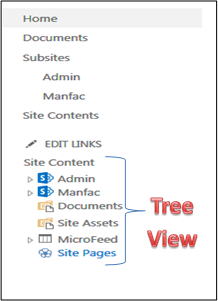Organizing content in SharePoint whether existing or new is a challenging task. Since SharePoint users upload and share data through this platform there is a need to classify content, right from the beginning. Hence administrators and content owners will do better if they follow content classification and management protocols which will help them accommodate their ever expanding database in the long run with ease.
Here we show you how it can be done in SharePoint with the help of an application that not only helps administrators and content owners accomplish this, but also shoulders the management tasks, offloading a heavy burden from SharePoint administrators and content owners.
To organize fresh content it is necessary to plan and implement an Enterprise Content Management strategy that can be amended or improved upon as the business evolves. This is accomplished through:
- Web Content Management
- Document Management
- Media Management (Digital Content or Media files)
- Records Management
- Metadata Management
At a micro content management level, this may be carried out through the following steps
- Create custom Lists & Libraries according to the hierarchy of the organization and according to the different Content Types that would be used. Name the Lists and Libraries according to the departments they will represent. This helps in better understanding and quick identification of the relevant content when needed
- Update metadata according to the need & create custom metadata columns wherever necessary. Maintaining consistency of metadata is important and proves extremely useful as the content grows with usage
- Assign specific users to the Sites, Sub-Sites and any other content categories where they would be sharing content
- Make content and other resources available to the right people and in the right manner
- Organize content so that it is searchable and scalable
Such steps are necessary as SharePoint content expands exponentially with time and use. Given below is an example of the classification of fresh content in SharePoint.
Example – Fresh content is to be organized in SharePoint for an organization named “Troy”. Here is a sample distribution showing various Sub-Sites created to fulfill the content – “organization, storage and exchange” needs of Troy. With growth, content can be added to the Sub-Sites in the form of custom created Lists and Libraries, or they can be subdivided further.
Here is a Tree View of the above classification

When content is organized in this manner from the beginning, it paves the way for expansion and accommodation of the growth in content.
SharePoint Information Organizer is an application which helps SharePoint administrators and content owners accomplish the task of organizing their fresh content with ease. Here’s a look at its home page.
With its capabilities like Manage Content, Classify Content, Cleanup Content, Search Content, as well as the multiple functions to manage SharePoint features and users, it provides comprehensive SharePoint administration and content classification capabilities. It is also designed to help administrators and owners keep SharePoint resources under their charge, at the optimum level of usage.
By following these simple protocols and executing the content classification and management tasks with the help of SharePoint Information Organizer, content owners and administrators can ensure a productive operation of their SharePoint servers.
To find out more about SharePoint Information Organizer, please visit – https://www.vyapinsoftware.com/products/sharepoint-migration/dockit/sharepoint-migration-tools









